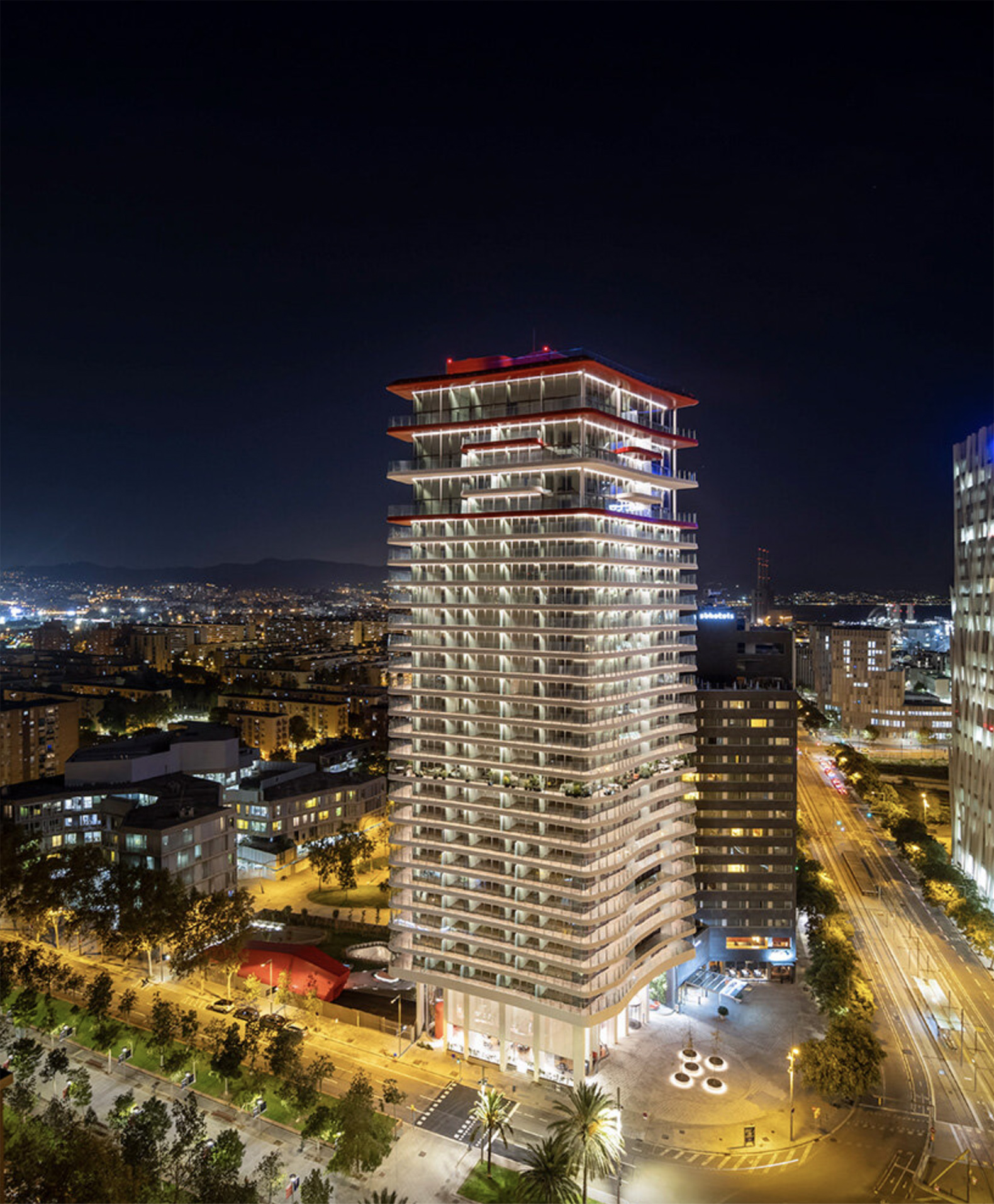Project description by Odile Decq
From the sea to the sky
From the sky to the sea
Smoothly undulating with a visual distortion
Twisting dynamically
Irregular but continuous
New form, new shape, new curves
Everywhere the same transformation
Antares proceed of a Global Design
White and Red, Red and white
And some dots of black
Swimming in the sky when flying over the sea
Magic height and horizontal extensions
An adventure to live.
“Constraints are an architect's challenge,'' affirms Decq. “But this project had more than usual. Happily, it gave rise to an innovative and beautiful project. Like many good things in life, the idea for it came quickly.”
Decq’s first sketches of the architecture were exactly as the building is today.
To build to the 100-metre height limit, 10 floors were added to the pre-existing structure making room for 88 apartments in a range of typologies; from 100 m² to duplexes featuring 5.8 metres of ceiling height and penthouses of 400 m². Each floor of the pre-existing structure was extended to create large flowing balconies around the building. Antares summits with a Sky Terrace featuring a rooftop infinity pool and 360° uninterrupted views to the horizon in all directions over Barcelona and the Mediterranean sea. On the ground, a fully landscaped garden, outdoor pavilion and a wide array of additional amenities also designed by Decq completed the brief after the competition, along with underground parking, staff quarters, and a variety of amenities in the basement, including a 1,000 square metre wellness area with a spa, a swimming pool, a hammam, a sauna, a gym and yoga facilities.
In the distinctly artistic approach for which she is renowned, Decq worked on the building's perception, transforming the static, standard high-rise mass into a light, dynamic and fluid form. Taking advantage of the additional height and the developer's request for balconies, the added surface areas were used to create a changing perception of the volume when viewed from different angles. The interrupted curves of each balcony create the phenomenon of entasis (the same visual trick was used on the Parthenon in Athens in 447 BC), enhancing the impression of height. Their indented geometry creates waves, transforming the building into a visually dynamic tower, echoing the fluidity of the neighbouring Mediterranean sea. This distinctive character, with its splashes of red, creates a singular new landmark in Barcelona’s skyline.
“When I was selected they told me that they thought my proposal best captured the spirit of Barcelona in my project,” explains Decq. “When I asked “why?” they replied, “because of this red touch at the top. It’s a building that is joyful.”
Red, is a recurring motif in Decq’s work. “It's one of my favourite colours” she points out. “Black is too but I don’t like to impose my dress sense on my client's architecture” she quips. “Red is the colour of Barcelona. It’s passion. It’s life. I wanted the red on the top of the building to be like a flag-signalling the building's presence and identity.”

Antares Barcelona Tower by Odile Decq. Photograph by Fernando Guerra
Decq’s interior plan is designed to orient the inhabitant towards the building's spectacular surroundings. The sea, the horizon, the city and the Montserrat mountains to the west are omnipresent on each floor thanks to floor-to-ceiling glass exterior walls and balustrades.
With her passionate pursuit of confluence in all domains, Decq was eager to propose an all-encompassing design scheme-something she labels ‘Global Design’. “I have always tried, since the very beginning of my career, to do more than just architecture. I want to have a hand in all aspects of life in the building”
Kitchen islands, sinks, furniture, lighting, lobby interior, landscaping and architecture combine to create a singular, coherent fully authored experience by one of the most creatively engaged architects working in the world today.
“With Antares, I have looked for a design that breathes dynamism in every place and every moment. A dynamism that emanates from the city itself and that has always fascinated me. That gives the building a strong identity and an enriching perception of time and space that shows a holistic approach to design from the outside to the inside by relaying the idea that each part of the building is a whole, with its components in relation and constant interactions between them and the whole."
Odile Decq


























































